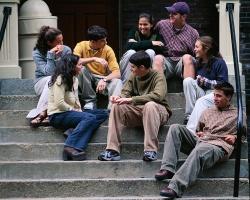I ask students on the first day of my journalism classes to fill out a questionnaire. Most questions inquire about their interest in journalism and any experience they have that is journalism-related. One question is: “What do you read, at least fairly regularly?”
Used to be, they would say The New York Times or Newsweek or Sports Illustrated. A few would list the local newspaper, or The New Yorker or The Economist to impress me. In recent years, the answers more often have been CNN.com, ESPN.com, blogs and other Internet offerings.
And then, at the beginning of the last semester, a student who claimed to be interested in journalism wrote this about what she reads: “Nothing.”
Her answer astonished me but shouldn’t have, because it epitomized the lack of intellectual curiosity in students that I have noticed in recent years, along with a decline in such basic skills as grammar, spelling and simple math. A sense of history? History is what happened since they left middle school.
As both a teacher and a father of two multi-tasking teenage daughters, I had long suspected that something was going on. While some students seem just as smart or smarter than they did 15 years ago, I’m also confronted with college sophomores who can’t identify Henry Kissinger or perform simple percentage exercises; who argue, as one did, that misspelling someone’s name was no big deal because I knew who she meant; students who begin sentences with lower-case letters and embellish news stories by adding their own facts.
I thought I was just a closet curmudgeon. After all, every young generation is associated with some kind of negative stereotype. But then I read two publications over the summer, one that validated my every suspicion, and one that gave me a glimmer of hope.




